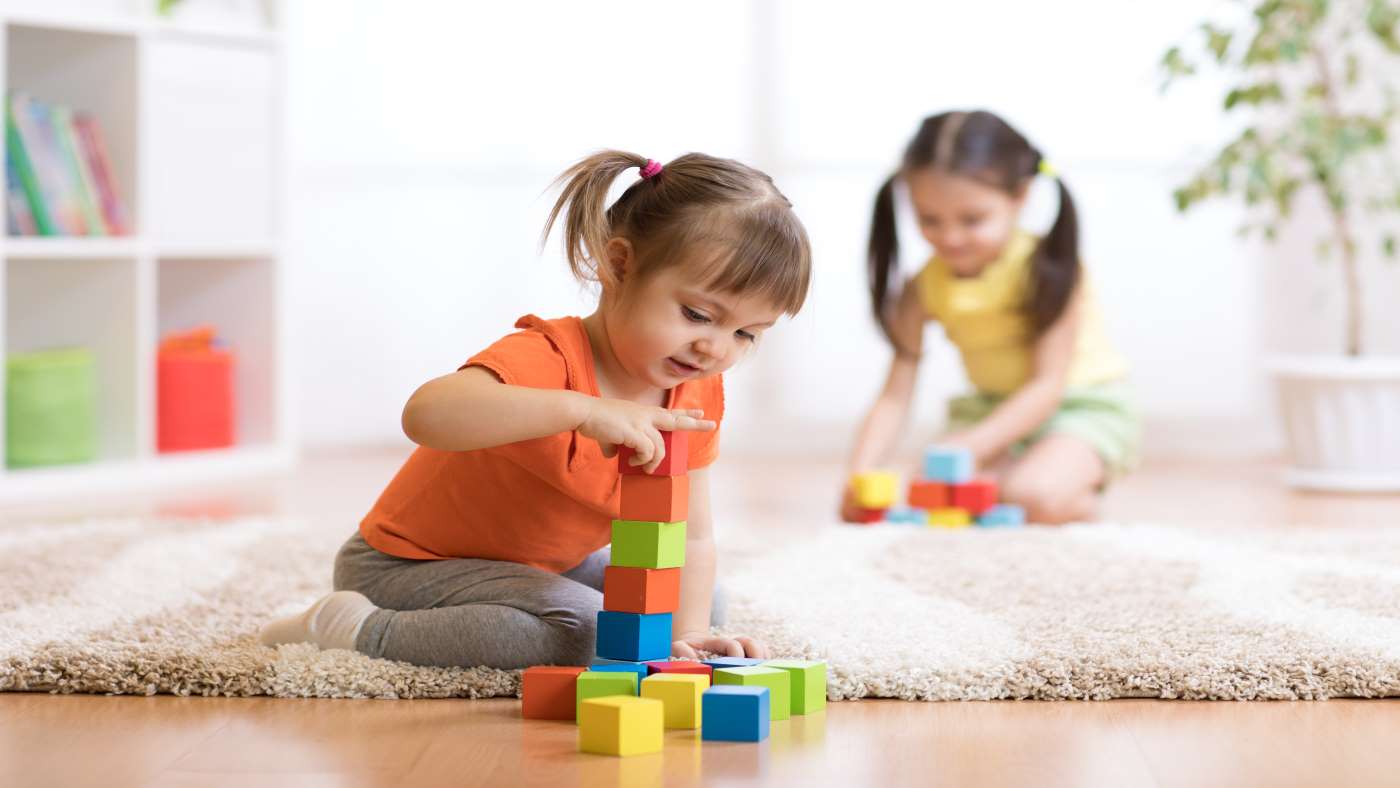Playing together doesn’t always look like it... especially when you’re looking at toddlers!

Have you noticed your toddler watching other children, copying them but not really getting involved or interacting with the other child? You might even have found that older siblings, or friend’s children, feel frustrated and don’t want to be copied – but your toddler doesn’t seem to want to change how they're playing. This is, in fact, an important stage of your toddler learning how to play with others, called parallel play... and here’s what you need to know about it.
Parallel play is a stage in the development of learning to play with others which was described in 1932 by American sociologist and researcher Mildred Parten.
It can look like your toddler is showing an interest in what the other child is doing, or copying actions, but not seeming to want to talk to or play directly with them.
Your toddler might go from wanting to watch other children play without getting involved at all (called ‘onlooker play’), to joining in by moving closer to the other child and using the same toy or copying what they’re doing.
They won’t yet be trying to achieve the same thing as the other child, or even really be playing the same game, as your toddler will be playing with their own goals and ideas in mind even while they copy what another child is doing. They often won’t try to interact directly with the other child while they play nearby.
It’s more than just copying; parallel play is about learning about social skills, other people’s thoughts and how things work.
When your toddler is busy with parallel play it might feel odd to watch, especially as we feel good manners would involve interacting with the people around us – so we want to see that from our children.
What is important to remember is that your toddler needs to go through this experience of parallel play to really understand some of the social skills needed to play with others – they are observing and trying out lots of different ways to play in a way which feels safe and achievable for them.
The next stage of play described by Parten, associative play, is when your toddler will begin to interact more directly with other children and start to be more able to share the toys being used.
If you’ve noticed your toddler is enjoying parallel play at the moment, celebrate this by letting them decide how much they interact with other children without adding pressure to chat or share.
Try to make sure there are enough toys for everyone (it can be better to keep playdates small at this stage to make that easier) and let other parents, and older children, know that your toddler might enjoy just watching or copying rather than joining in.
You can find out more about all the stages of play your toddler will move through in their development in our article Stages of play - how your child starts to play with other children (MFFY)